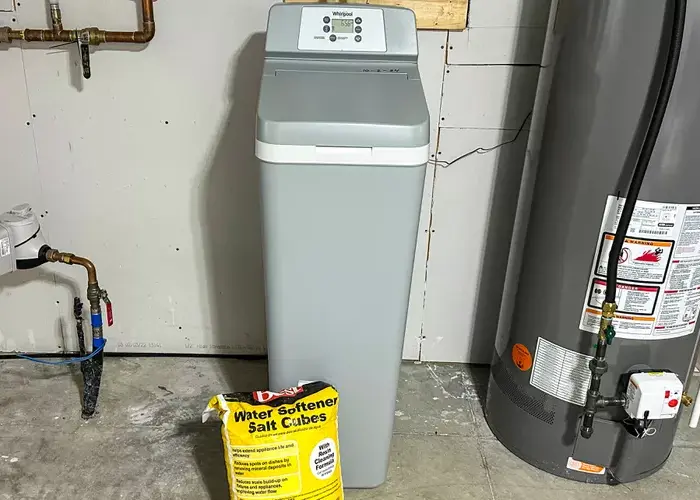For decades, scientists have been debating the benefits and dangers of fluoridating drinking water. This dichotomy regarding fluoride use is reflected in the U.S. Environmental Protection Agency (EPA) Safe Drinking Water Act standards, in which fluoride is first listed as a primary health-related, inorganic chemical contaminant, along with arsenic, asbestos, cyanide, and lead, but also as a secondary non-health-related contaminant, along with color, odor, total dissolved solids, and iron.
Interestingly, fluoride is the only “voluntary” chemical listed in the EPA standards, meaning there is no mandate to add or exclude it. Other contaminants have mandated treatment. Chemicals that are added, such as disinfectants, have mandated usage.
The primary EPA federally enforceable maximum contaminant level (MCL) for fluoride is four milligrams per liter (mg/L) or parts per million (ppm). The nonenforceable secondary standard level, or secondary maximum contaminant level (SMCL), is 2 mg/L. Adding to these apparently contradictory standards is that, while SMCLs are not federally enforceable, the EPA uniquely requires a special notice for exceeding the fluoride SMCL of 2 mg/L (40 CFR 141.208).
Aside from the EPA, other regulatory bodies have offered a diversity of opinions on safe fluoride levels. The state of California limits the MCL to 2 mg/L, while the World Health Organization guideline is 1.5 mg/L. The U.S. Department of Health and Human Services, which oversees the national water fluoridation program, recommends an optimal level of 0.7 mg/L, to “promote public health benefits of fluoride for preventing tooth decay while minimizing the chance for dental fluorosis.”

Scientifically establishing a safe level is critical. According to the EPA, the health effects of long-term exposure to fluoride above the MCL include “bone disease (pain and tenderness of the bones); children may get mottled teeth.”
The National Toxicology Program study report Monograph on the State of Science Concerning Fluoride Exposure and Neurodevelopment and Cognition, which links high levels of fluoride with lower IQs in children, has brought this debate to the forefront. The report’s 2024 release was reportedly delayed because of objections from proponents of fluoridation, including the American Dental Association (ADA). And recently, in Food and Water Watch et al. v. United States Environmental Protection Agency et al., a federal judge in California issued a ruling requiring the EPA to investigate the potential risks of fluoridation.
Three other critical considerations that have not yet been addressed would require clarification before an informed decision on fluoride addition to public drinking water can be made:
- What concentration of fluoride is coming out of a tap at any given moment?
- Is there anything else in the tap water that might be harmful?
- What volume of water should one drink daily to receive the proper dosage of fluoride, and is this amount the same for all ages and populations?
What concentration of fluoride is coming out of your tap? The only way to know is to test the water at your tap. Testing is available through certified labs, or municipalities may test it, often for a fee. But the fluoride levels fluctuate, so the test results will be valid only for a specific date and time and cannot be relied on to predict precise levels at any other time. Some large U.S. cities, such as Detroit, New York City, and Chicago, add fluoride to their water. Others with naturally occurring fluoride, such as Houston and Los Angeles, do not.
Most municipalities’ annual consumer confidence reports (CCRs) about water quality will show a range of fluoride concentration values over the one-year reporting period. A typical report might show readings ranging from zero, none detected, to 0.8 mg/L. Some report a single maximum reading, say 0.8 mg/L, implying that there were lower readings that were not reported.
According to the Environmental Working Group, a handful of midsize public water systems serving between 10,000 and 26,000 people have reported fluoride up to 3.67 mg/L, and a few of the smallest systems serving hundreds of people have reported fluoride as high as 9.5 mg/L. It is very difficult for municipalities to precisely control fluoride content throughout miles of distribution piping. Therefore, it is not possible to definitively state that fluoride concentration is at the optimal level at all times coming out of every single tap in a municipal water system or even what the level is at all.
Is there anything else in the tap water that might be harmful? Let us stipulate that municipal water-treatment systems meet or exceed all current EPA and state standards and the water is considered safe to drink. Having stipulated that, all annual CCRs contain the following paragraph:
Some people may be more vulnerable to certain microbial contaminants, such as Cryptosporidium, in drinking water. Infants; some elderly or immunocompromised persons, such as those undergoing chemotherapy for cancer; those who have undergone organ transplants; those who are undergoing treatment with steroids; and people with HIV/AIDS or other immune system disorders can be particularly at risk from infections. These people should seek advice about drinking water from a physician or health care provider. Additional guidelines on appropriate means to lessen the risk of infection by Cryptosporidium are available from the Safe Drinking Water Hotline (1-800-426-4791).
In addition, water from public water systems that is considered safe to drink and meets or exceeds all mandated limits may still legally contain allowable traces of lead and possibly other contaminants below today’s MCLs. However, these contaminants have maximum contaminant level goals of zero because no amount of lead or similar contaminants is desirable.
Further, any chlorinated or chloramine disinfected water supply should have a free chlorine or total chlorine/chloramine residual at every tap limited to a maximum residual disinfectant level of 4 mg/L (0.2 mg/L is considered efficacious, and 2 mg/L is considered ideal for a swimming pool) and may also contain disinfection by-products. Moreover, we are only beginning to understand the negative public health impact of a range of emerging contaminants such as PFAS. Therefore, if we give our children tap water for the fluoride content, it is unavoidable that they may also ingest other contaminants, as current legislation lags behind emerging health concerns.
What volume of water should we drink daily to receive the proper dosage of fluoride, and is the amount the same for all ages and populations? The ADA publishes specific clinically recommended dosages for topical fluoride from evidence-based research. The recommendations are precise and differ by age and risk profile. Some key points: “The panel recommends the following for people at risk of developing dental caries: 2.26% fluoride varnish or 1.23% fluoride (acidulated phosphate fluoride) gel, or a prescription-strength, home-use 0.5% fluoride gel or paste or 0.09% fluoride mouth rinse for 6 years or older. Only 2.26% fluoride varnish is recommended for children younger than 6 years.”
Fluoride toothpaste is packaged with a mandatory warning: “Keep out of reach of children under 6 years of age. If more than used for brushing is accidentally swallowed, get medical help or contact a Poison Control Center right away” (U.S. F.D.A., 21CFR355.50).
Yet, I have been unable to find any similar specific ADA clinical recommendation on the volume of tap water a baby, toddler, youngster, teenager, or adult should drink daily for an efficacious fluoride regimen. Logically, the volume cannot be the same for a teething infant and a teenager, just as the clinical recommendations for topical fluoride are not the same. This oversight seems to result in such imprecision that no entity, not even the ADA, can objectively and definitively state what volume of tap water any one baby, toddler, youngster, teenager, or adult should drink to ingest the proper dosage of fluoride from their tap water.
Clearly, more rigorous scientific research is needed before a truly fully informed decision can be made, and the recent federal court decision may finally bring that about.
From Water Conditioning and Purification International Magazine








